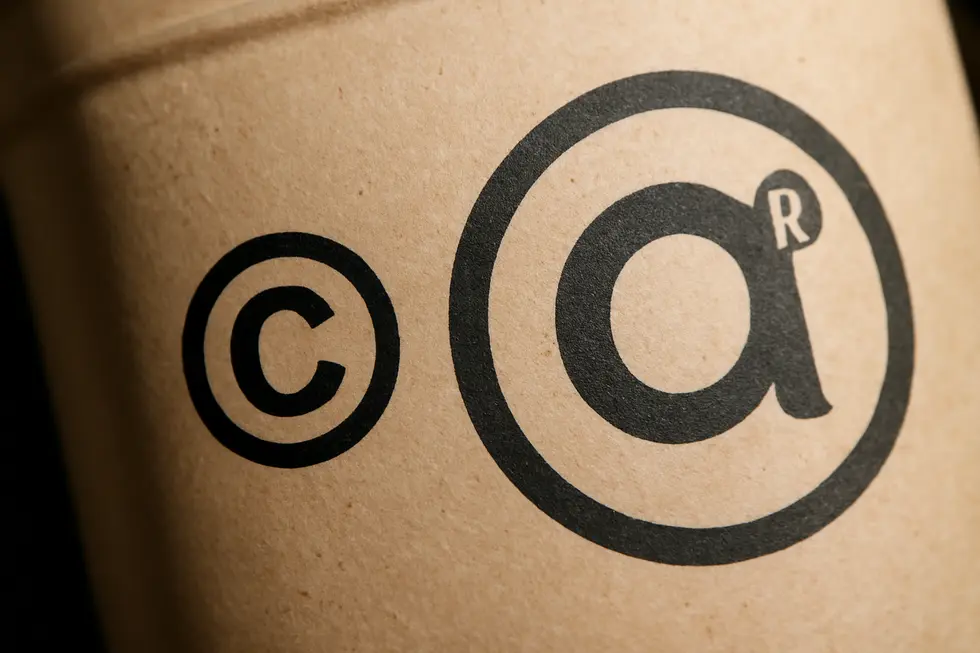Introduction
For business owners, safeguarding intellectual property is crucial to maintaining competitive advantage and brand integrity. Copyrights and registered trademarks are two foundational, yet distinct, legal protections that serve different purposes in securing creative works and brand identifiers. Understanding these protections enables business leaders to strategically protect their assets, avoid legal pitfalls, and capitalize on their intellectual property’s value. This article unpacks the fundamental differences between copyright and registered trademark, guides you through the specific registration processes, explicates their scope and duration of protection, explains the legal symbols associated with each, and highlights their economic and commercial significance for your business growth and brand security.
Tables of Contents
Chapter 1: Copyright Registered Trademark: Fundamental Differences and Legal Protections
- Distinguishing Purpose and Scope: How Copyright and Registered Trademarks Protect Creativity and Brand Identity
- Navigating Legal Registration and Protection Duration in Copyright and Registered Trademarks
- Navigating Legal Enforcement and Remedies: Distinctions Between Copyright and Registered Trademark Protections
Chapter 2: Copyright Registered Trademark: Registration Processes and Requirements
- Navigating the Complexities of Copyright Registration: Process and Legal Essentials
- Navigating Trademark Registration: Essential Procedures and Legal Advantages for Brand Protection
- Navigating Registration, Economic Benefits, and Societal Roles of Copyrights and Trademarks
Chapter 3: Copyright Registered Trademark: Scope and Duration of Protection
- Understanding What Copyright and Registered Trademarks Protect: From Creative Works to Brand Identity
- Balancing Time-Limited Copyrights with Potentially Perpetual Trademark Rights
- Sustaining and Enforcing Registered Trademark Rights: Essential Practices for Longevity and Legal Control
Chapter 4: Copyright Registered Trademark: Symbols and Legal Significance
- Decoding Intellectual Property Symbols: Legal Implications of ©, ™, and ® in Protection
- The Critical Role of ©, ™, and ® Symbols in Asserting Legal Rights and Enhancing Enforcement
- Economic and Societal Impact of Copyright and Registered Trademark Symbols in Commerce and Branding
Chapter 5: Copyright and Registered Trademark: Economic and Commercial Impacts of Market Exclusivity and Enforcement
- Harnessing Market Exclusivity and Enforcement to Drive Economic Value in Copyrights and Trademarks
- Unlocking Revenue Streams and Valuing Intellectual Property Assets in Copyright and Trademark Law
- Sustaining Brand Value: How Duration and Renewal of Copyright and Registered Trademarks Drive Long-term Business Growth
Chapter 1: Copyright Registered Trademark: Fundamental Differences and Legal Protections

1. Distinguishing Purpose and Scope: How Copyright and Registered Trademarks Protect Creativity and Brand Identity
Copyright and registered trademarks serve distinct but critical roles in intellectual property law, reflecting their unique purposes and scopes of protection. Copyright focuses on shielding original creative works—from literary texts and music to visual art and software—guarding the expression of ideas once fixed in a tangible form. This protection gives creators exclusive rights to reproduce, distribute, and display their works, ensuring their creative investments are legally safeguarded. While copyright automatically attaches at creation, its breadth covers only the specific expression, not the underlying ideas or concepts themselves. Typically, this protection endures for the life of the author plus seventy years, reinforcing long-term control over the creative output.
In contrast, a registered trademark safeguards the commercial identity of a brand. It protects distinctive elements such as names, logos, and slogans that signal the source of goods or services, helping consumers differentiate one business from another while preserving brand reputation. Unlike copyright, trademark protection centers on consumer perception and marketplace function rather than creative originality. Trademark rights arise from actual use in commerce but gain robustness through federal registration with the USPTO, which grants nationwide, enforceable rights and the ability to display the ® symbol. Trademarks can last indefinitely, provided they remain in active use and undergo timely renewals, underscoring their role in ongoing business identity and consumer trust.
Legally, copyright protection is automatic upon creation but requires registration for enforcement in U.S. courts, primarily preventing unauthorized copying or exploitation. Trademark registration, while not mandatory, significantly strengthens legal rights against infringers who might attempt to use confusingly similar marks, thus protecting consumers and brand owners alike.
This distinction between protecting creative expression and brand identifiers clarifies why these two pillars of intellectual property exist side by side. Each serves different stakeholders and objectives within the ecosystem of innovation and commerce.
For more insights on protecting creative works, see this comprehensive overview of copyright protection for books, movies, and songs.
2. Navigating Legal Registration and Protection Duration in Copyright and Registered Trademarks
Copyright and registered trademarks serve distinct roles in intellectual property law, reflected in their legal registration processes and duration of protection. Copyright protects original creative works such as books, music, and films. This protection arises automatically as soon as the work is created, requiring no formal registration. However, registering with the U.S. Copyright Office, although optional, significantly enhances enforcement capabilities. It allows copyright owners to initiate federal lawsuits and claim statutory damages if infringement occurs. Importantly, copyright protection generally lasts the lifetime of the author plus 70 years, after which the work enters the public domain. There is no obligation to renew copyright registrations since protection spans this extended period automatically.
Registered trademarks, by contrast, protect brand identifiers like logos, slogans, and business names that differentiate goods or services in commerce. Unlike copyright, legal registration of trademarks with the United States Patent and Trademark Office (USPTO) is essential for nationwide protection. The registration process involves researching existing marks to avoid conflicts, submitting detailed applications, and paying fees that typically start around $250 per classification of goods or services. Once registered, trademarks provide exclusive rights and the ability to use the ® symbol, signaling legal protection to competitors and consumers.
Trademark protection can potentially last indefinitely, but it requires continuous use in commerce and periodic renewal every ten years. Failure to maintain active use or timely renewals risks abandonment, causing rights to lapse. This contrasts with copyright’s fixed, lengthy term without renewal needs. Trademark holders must also actively police their marks to prevent infringement and maintain their validity.
These legal distinctions highlight how copyrights safeguard the expression of ideas automatically for long periods, while trademarks require formal registration and ongoing maintenance to protect a commercial identity continuously. Understanding these divergent requirements is essential for effectively managing intellectual property rights within a business or creative endeavor. For further details on securing creative works, explore copyright protection for books and media.
Official references for these rules are available from the U.S. Copyright Office and the USPTO, reflecting U.S. legal standards on registration and term durations.
3. Navigating Legal Enforcement and Remedies: Distinctions Between Copyright and Registered Trademark Protections
Legal Enforcement and Remedies: Distinct Paths for Copyright and Registered Trademark Protections
Copyright and registered trademark protections operate under different legal frameworks, reflecting their unique purposes and subject matters. Copyright safeguards original creative works such as literature, art, music, and software, focusing on preventing unauthorized copying or use of the creator’s expressive material. This protection arises automatically upon the work’s creation, but registering with the U.S. Copyright Office significantly strengthens enforcement capabilities. Copyright owners can seek monetary damages, injunctions to halt infringing activities, and utilize takedown procedures on platforms hosting unauthorized content. In some cases, willful infringement may lead to criminal penalties, underscoring the serious protection accorded to creative works.
In contrast, registered trademarks protect brand identifiers—including names, logos, slogans, and trade dress—that distinguish goods or services in commerce. The goal here is to prevent consumer confusion about the source or sponsorship of products. While trademark rights may begin with actual commercial use, federal registration with the USPTO provides stronger, nationwide protection. Trademark enforcement typically involves cease-and-desist orders, monetary damages, and injunctive relief aimed at preserving brand integrity and market value. The legal standard centers on whether the alleged use creates a likelihood of consumer confusion, a distinct criterion from copyright’s unauthorized copying standard.
These protections also differ in legal defenses: trademark law allows fair use defenses for descriptive or nominative references, while copyright infringement focuses on whether the work was copied unlawfully. Together, these mechanisms emphasize that copyright protects the creative work itself, while trademarks defend how that work or product is recognized in the marketplace. Each leverages registration to enhance remedies, but their distinct enforcement processes reflect the separate roles they play in intellectual property law.
Learn more about the benefits of registering copyrights for businesses at benefits of copyright registration.
External reference: U.S. Copyright Office (https://www.copyright.gov/registration/)
Chapter 2: Copyright Registered Trademark: Registration Processes and Requirements

1. Navigating the Complexities of Copyright Registration: Process and Legal Essentials
Navigating Copyright Registration: Process and Legal Essentials
Registering a copyright solidifies the legal foundation protecting original creative works fixed in a tangible medium, such as books, music, or software. While copyright protection arises automatically upon creation, formal registration with the U.S. Copyright Office strengthens enforcement options. Registration grants eligibility for statutory damages and attorney’s fees in infringement lawsuits, providing significant legal advantages.
The process begins with identifying the proper application form tailored to the work’s category, for instance, Form TX for literary works or Form VA for visual arts. Applicants must accurately complete the form detailing authorship and claimant information. Next, submitting one or two copies of the work—depending on whether it is unpublished or published—is required. These deposit copies exemplify the material to be registered.
Filing is most efficient through the U.S. Copyright Office’s online system, which also lowers fees, generally ranging from $45 to $125. Paper submissions remain an option but typically incur higher costs and longer processing times. After submission, the Office examines the application for compliance before issuing a certificate of registration, a process that often takes 3 to 6 months.
Keeping thorough records of all materials and correspondence is crucial for future enforcement. For example, a written manuscript would receive copyright protection at the moment of fixation, but registering it electronically ensures stronger legal standing. This distinctions also help differentiate copyright from trademarks, which cover brand identity rather than creative content.
For further guidance on enforcing creative rights through registration, explore benefits of copyright registration for business. More detailed application instructions and forms can be found on the official U.S. Copyright Office website.
2. Navigating Trademark Registration: Essential Procedures and Legal Advantages for Brand Protection
Trademark registration is a critical legal procedure that affords businesses exclusive rights to use specific marks like names, logos, and slogans to identify their goods or services. This process begins with conducting a thorough trademark search to confirm the mark’s uniqueness and avoid conflicts with existing registrations. Once cleared, an application is filed with the United States Patent and Trademark Office (USPTO), providing details such as the mark itself, ownership information, and the scope of goods or services covered.
Following submission, a USPTO examining attorney reviews the application meticulously for compliance, distinctiveness, and potential conflicts—a phase that can take several months. If the application passes this stage, the mark is published in the USPTO’s Official Gazette, granting third parties 30 days to oppose the registration based on claims of prior rights. Absence of opposition or resolution of objections leads to issuance of a registration certificate, conferring nationwide exclusive rights to the trademark owner.
Before federal registration, mark owners typically use the “TM” symbol to assert rights, but once registered, the ® symbol can be displayed to signal official registration and stronger legal protection.
Registered trademarks deliver invaluable legal advantages beyond mere branding. They provide protection across the entire United States, unlike common law rights that are geographically limited. Registered rights also enable the owner to enforce claims through litigation, seek damages, and prevent counterfeit goods at U.S. borders. Furthermore, registration acts as public notice, deterring potential infringers by establishing clear ownership.
It is important to distinguish trademark registration from copyright protections. While trademarks secure brand identifiers in commerce, copyrights protect original creative expressions like literary and artistic works. For businesses seeking to safeguard their brand’s identity robustly, understanding trademark registration’s comprehensive steps and legal benefits is essential. For more detailed guidance, explore the detailed trademark registration overview.
For an insightful breakdown of related brand trademark protections, see our resource on legally protected brand trademark.
3. Navigating Registration, Economic Benefits, and Societal Roles of Copyrights and Trademarks
Copyright and registered trademarks diverge considerably in how they are registered, their economic influence, and their societal significance. Copyright protection begins automatically when an original work is fixed in a tangible medium—no registration is required for basic protection. However, registering with the U.S. Copyright Office provides vital enforcement benefits, including the ability to pursue statutory damages in court. This process is relatively streamlined, requiring submission of the work and a fee, typically processed within months. In contrast, trademarks gain protection either through actual use in commerce or federal registration with the USPTO, where registration is highly recommended to secure comprehensive, nationwide rights. Trademark registration demands a thorough search to avoid conflicts, detailed applications describing the mark, and can take 6 to 12 months or more before approval. The economic stakes differ as well: trademarks play a critical role in building and safeguarding brand equity. They enable exclusive commercial use, support licensing agreements, and deter copycat competitors, though trademark litigation can be expensive and impact company valuation. Copyright safeguards the economic interests of creators by controlling reproduction and distribution, often without the need for formal registration, enabling creators to monetize originality. Societally, trademarks act as markers of quality and origin, fostering consumer trust while aiding efforts against counterfeiting through legal and customs enforcement. Copyright enriches cultural development by incentivizing creators to produce original works while allowing for public access through exceptions like fair use. These distinct yet complementary systems reflect how intellectual property law balances protecting creators’ rights, promoting economic value, and serving societal interests. For more on how copyright protection applies to creative outputs like books and music, visit copyright protection books movies songs.
For detailed legal perspectives, see the U.S. Copyright Act and the Lanham Act governing trademarks.
Chapter 3: Copyright Registered Trademark: Scope and Duration of Protection

1. Understanding What Copyright and Registered Trademarks Protect: From Creative Works to Brand Identity
Copyright and registered trademark serve as two foundational forms of intellectual property protection, each guarding different aspects of creativity and commerce. Copyright safeguards original creative expressions—such as books, music, artwork, software, and architectural designs—that are fixed in a tangible medium. Importantly, copyright does not cover ideas themselves but rather the specific way those ideas are expressed. This protection arises automatically upon creation, granting authors exclusive rights to reproduce, distribute, and publicly display their works, typically enduring for the life of the author plus 70 years. While registration with the U.S. Copyright Office is optional, it significantly strengthens legal enforcement and remedies against infringement.
On the other hand, registered trademarks protect distinctive brand identifiers used in commerce, including names, logos, slogans, and trade dress that distinguish the source of goods or services. Unlike copyright, trademark protection focuses on consumer recognition and preventing marketplace confusion. Trademark rights can be established through actual use, but federal registration with the USPTO enhances nationwide protection, allowing the mark owner to utilize the ® symbol. Registration requires the mark to be distinctive—arbitrary, fanciful, or suggestive marks are easier to protect, while generic terms are excluded and descriptive marks need secondary meaning. Trademark rights may last indefinitely, provided the mark remains in use and renewal requirements are met, offering businesses continuous protection of their brand identity.
Together, copyright and trademark cover critical but separate intellectual property domains. Creators rely on copyright to shield their artistic or literary works, while businesses depend on registered trademarks to secure the exclusive commercial identity of their products and services. Employing both protections strategically can help entities comprehensively guard their creative content and brand assets, bolstering both artistic integrity and marketplace presence. For a deeper dive into copyright specifics, see this guide on copyright protection for books, movies, and songs.
2. Balancing Time-Limited Copyrights with Potentially Perpetual Trademark Rights
Copyright protection in the United States provides a finite yet robust safeguard for creative works, typically lasting for the life of the author plus 70 years. For works made for hire or corporate authorship, this term adjusts to 95 years from publication or 120 years from creation, whichever is shorter. Once these statutory limits expire, the work falls into the public domain, enabling unrestricted use by the public. This limited duration reflects copyright’s policy goal of encouraging creativity while eventually allowing broader access to cultural and intellectual assets.
In contrast, registered trademarks offer the possibility of indefinite protection, anchored in ongoing use and maintenance. Trademark registrations begin with a 10-year term but can be renewed repeatedly every decade, maintaining exclusive rights as long as the mark remains continuously used in commerce. Failure to use a trademark for a period, generally three to five years, may result in abandonment and loss of protection, reinforcing the notion that trademarks represent active business interests rather than static property.
This divergence in duration highlights their distinct purposes: copyrights protect the original expression of ideas with a limited monopoly encouraging eventual public availability, while trademarks safeguard brand identity and consumer recognition as long as the brand persists in the marketplace. As such, trademark protection is inherently tied to business continuity, requiring renewal filings and proof of use, whereas copyright arises automatically upon creation and does not require renewal.
Understanding this contrast is crucial for creators and businesses alike. Copyright holders must recognize their limited-term rights even when registered, whereas trademark owners can potentially secure lifelong exclusivity by maintaining their marks. For those seeking to learn more about maximizing brand protection, exploring brand trademark business protection offers valuable insights.
Ultimately, this balance between temporality and perpetuity in intellectual property law ensures both cultural enrichment and commercial stability, each tailored to the unique nature of creative works and brand identities.
3. Sustaining and Enforcing Registered Trademark Rights: Essential Practices for Longevity and Legal Control
Maintaining a registered trademark requires diligent adherence to specific legal obligations and proactive enforcement to preserve its value and exclusivity over time. Unlike copyright, which automatically attaches upon creation, trademark protection hinges on ongoing commercial use and compliance with renewal requirements set by the U.S. Patent and Trademark Office (USPTO). To ensure uninterrupted federal registration, trademark owners must file the Section 8 Declaration of Continued Use between the fifth and sixth year following registration. This filing affirms the mark’s active use in commerce as originally registered. Later, at the ten-year mark and every decade thereafter, a combined Section 8 and Section 9 renewal must be submitted to extend protection. Missing these deadlines risks cancellation of rights, regardless of actual use.
Consistent use of the trademark exactly as registered is critical. Alterations in spelling, design, or the context of use can indicate abandonment or necessitate a fresh application. Moreover, trademark owners should guard against their marks becoming generic terms. Using the mark as a distinctive adjective, as in “Brand® product,” helps maintain its distinctiveness in the consumer’s mind and legal eyes.
Ownership of a registered trademark brings valuable legal rights but does not automatically enforce them. Vigilant monitoring for unauthorized or infringing use across marketplaces, online platforms, and even trademark filings by others is necessary. Early identification of violations permits timely responses such as cease-and-desist communications or litigation to prevent brand dilution, consumer confusion, and reputational damage. Additionally, a federally registered trademark strengthens licensing agreements by enabling enforceable quality control provisions. Without registration, controlling licensees’ usage is legally precarious and risks dilution of the mark.
These combined efforts—timely filings, faithful use, constant enforcement, and strategic licensing—ensure trademark rights endure and robustly protect the commercial identity they represent. For a detailed breakdown of these maintenance and enforcement processes, refer to authoritative guidance from the USPTO and legal experts such as those highlighted by Trademark Gold’s insights on brand protection.
Chapter 4: Copyright Registered Trademark: Symbols and Legal Significance

1. Decoding Intellectual Property Symbols: Legal Implications of ©, ™, and ® in Protection
Intellectual property protection is often immediately recognized by three key symbols: ©, ™, and ®, each conveying distinct legal meanings and serving to safeguard creative and commercial assets. The © symbol is universally associated with copyright protection. It signals that an original work—such as literature, music, art, or software—is legally protected from unauthorized reproduction or adaptation. This symbol is usually paired with the copyright holder’s name and the year of first publication, clearly marking the thresholds of ownership. While copyright rights arise automatically upon creation, the © symbol functions primarily as a notice to deter unwarranted use and affirm ownership.
In contrast, the ™ symbol designates a claim to an unregistered trademark that identifies a product or service’s source. It can be used while an application is pending or even without formal registration to assert rights under common law, primarily alerting competitors and consumers to a brand claim. Although the legal protections under ™ are more limited, this symbol plays a crucial role in protecting brand identity during early commercialization.
The ® symbol represents a federally registered trademark, granted after approval from the U.S. Patent and Trademark Office. This registration confers nationwide exclusive rights to use that mark for specified goods or services and deters infringement with stronger legal remedies. Misuse of the ® symbol without official registration is prohibited and may result in legal penalties.
Together, these symbols clarify the nature of intellectual property rights—copyright protects original expressions, while trademarks protect distinctive identifiers in commerce. Service marks (SM) function similarly to ™ but specifically identify services rather than goods. Furthermore, digital works often employ watermarks or metadata to reinforce copyright claims online. Proper use of these symbols not only communicates legal status but also helps creators and businesses uphold and assert their rights effectively, reducing risks of infringement.
For a more comprehensive understanding of trademark and copyright distinctions, the resource on legally protected brand trademark offers valuable insights. Additional detailed explanations about different symbols can be found at https://www.indiafilings.com/learn/trademark-tm-r-c-symbol/.
2. The Critical Role of ©, ™, and ® Symbols in Asserting Legal Rights and Enhancing Enforcement
The symbols ©, ™, and ® serve as powerful visual emblems that communicate ownership and legal status in intellectual property, significantly impacting enforcement and compliance. For copyrights, the © symbol denotes a claimed right to original literary, artistic, or musical works. Although copyright protection arises automatically upon creation, registering with the U.S. Copyright Office amplifies enforcement capabilities by permitting federal lawsuits and formal control over reproduction and distribution. The © symbol itself does not grant legal protection but functions as a public notice of claim, encouraging respect for the creator’s rights.
For trademarks, these symbols carry distinct meanings and legal significance. The ™ symbol indicates an unregistered trademark claim under common law, signaling intent to protect a brand element such as a name, logo, or slogan. However, ™ offers limited protection and relies heavily on proof of actual market use. In contrast, the ® symbol marks a federally registered trademark, conferring nationwide exclusive rights and legal advantages like the ability to sue for infringement in federal court and prevent counterfeit imports. Registration also supports the trademark becoming incontestable after five continuous years, a status that greatly strengthens defenses against challenges.
Displaying these symbols correctly facilitates public notice, deterring potential infringers by clearly declaring ownership. This transparency assists in enforcing legal rights and upholding licensing agreements, especially for trademarks where registration is essential to maintain quality control and brand integrity. Without registration, license enforceability diminishes, increasing risks of dilution or misuse. Similarly, for copyrights, registration reinforces legal standing to combat unauthorized use.
Together, these symbols form a critical aspect of intellectual property law by delineating ownership and compliance parameters. Proper use not only clarifies rights but also energizes enforcement actions, ensuring creators and brand owners maintain control over their valuable intellectual assets.
For further insights into copyright protection and registration benefits, see copyright protection essentials.
References:
- U.S. Copyright Office and USPTO guidelines on symbol usage and registration
- Federal court precedents affirming the importance of registration in enforcement
3. Economic and Societal Impact of Copyright and Registered Trademark Symbols in Commerce and Branding
Economic and Societal Impact of Copyright and Registered Trademark Symbols in Commerce and Branding
The symbols © for copyright and ® for registered trademarks extend beyond legal formalities; they play crucial roles in shaping economic value and societal dynamics within commerce and branding. Economically, registered trademarks grant businesses exclusive rights to their unique brand identifiers. This exclusivity protects investments in brand development by preventing others from using confusingly similar marks, thereby preserving market position and minimizing dilution. As a result, a federally registered trademark enhances a brand’s intangible value, making it a compelling asset in the eyes of investors and consumers alike, especially in digital and global marketplaces where brand identity is paramount.
Societally, trademark symbols communicate legal protection and legitimacy to consumers, fostering trust and brand loyalty. Consumers rely on these visual cues to identify authentic products and services, reducing confusion and counterfeit risks while supporting fair market competition. This dynamic nurtures a transparent marketplace where innovation thrives as brands differentiate themselves meaningfully. The misuse of trademark symbols such as ® without official registration not only undermines these protections but also exposes users to legal penalties, emphasizing the importance of accurate symbol usage.
Copyright symbols similarly signal ownership of original creative works, reinforcing authors’ rights and encouraging cultural and artistic contributions. Both copyright and trademark registrations serve as public notices that help organize intellectual property ownership, reduce disputes, and enhance awareness about rights and responsibilities.
The proper use and recognition of these symbols thus serve as pillars of economic strength and social trust in the realm of intellectual property. They secure legal claims, elevate brand credibility, and ultimately sustain the connection between creators, businesses, and the public.
For an in-depth look into how trademarks secure business identity and market presence, see legally protected brand trademark.
External reference: LegalZoom on trademark symbols and usage [1].
Chapter 5: Copyright and Registered Trademark: Economic and Commercial Impacts of Market Exclusivity and Enforcement

1. Harnessing Market Exclusivity and Enforcement to Drive Economic Value in Copyrights and Trademarks
Harnessing Market Exclusivity and Enforcement to Drive Economic Value in Copyrights and Trademarks
Market exclusivity under copyright and registered trademark protection serves as a crucial economic driver by empowering rights holders to control how their creations and brands are used commercially. Copyright grants creators exclusive rights to reproduce, distribute, and publicly display their original works, securing the foundation for monetization and creative investment. While copyright protection arises automatically upon creation, formal registration significantly strengthens legal enforcement, allowing copyright owners to seek statutory damages and assert control over unauthorized uses.
Registered trademarks extend market exclusivity to brand elements such as logos, slogans, and distinctive design features. Unlike copyrights, trademark rights originate from use in commerce, but federal registration with the USPTO enhances protections by providing nationwide exclusive rights and public notice signaling ownership. This exclusivity not only prevents consumer confusion but also bolsters brand equity by safeguarding identity and reputation across competitive marketplaces.
The enforcement mechanisms for both intellectual property forms are essential to maintaining economic advantages. Rights holders employ legal tools including cease-and-desist letters, infringement lawsuits, and licensing agreements to prevent unauthorized use that could dilute market value or confuse consumers. Licensing, in particular, acts as a revenue stream, enabling controlled expansion while safeguarding quality and brand integrity through strict contractual terms. However, enforcement complexity increases when operating internationally due to differing laws and higher litigation costs, necessitating strategic vigilance to protect intellectual assets globally.
Together, copyright and trademark exclusivity shape competitive market dynamics by enabling creators and businesses to leverage innovation and brand investment into sustained economic returns. For businesses aiming to secure these advantages, understanding the benefits of registration and proactive enforcement is vital to maximizing the commercial potential of their intellectual property.
For more insights on trademark protections, see legally protected brand trademark.
Further reading on enforcement strategies can be found here: https://www.etblaw.com/trademark-infringement-what-it-is-and-how-to-protect-your-rights/
2. Unlocking Revenue Streams and Valuing Intellectual Property Assets in Copyright and Trademark Law
The monetization and valuation of copyrights and registered trademarks play pivotal roles in shaping their economic and commercial impact. These intellectual property (IP) assets represent intangible yet valuable resources that rights holders can leverage to generate revenue, strengthen market position, and attract investment. Monetization commonly occurs through licensing arrangements, where rights holders grant others permission to use creative works or brand identifiers in exchange for royalties. This strategy not only creates steady income but also expands market reach and reinforces brand equity. Alternatively, direct sales or franchising models allow outright transfer or broader exploitation of IP rights, facilitating diversification of income sources.
Valuing these intangible assets requires careful consideration of their future economic benefits and market comparability. The income approach, often employed for predictable revenue-generating IP like copyrighted software or well-established trademarks, estimates present value based on discounted projected earnings. The market approach compares similar transactions or royalty rates to ascertain worth, particularly useful for trademark portfolios with relevant benchmarks. Meanwhile, the cost approach anticipates the expense to recreate the IP, relevant for nascent assets without established revenue histories. These valuation methods underpin negotiations, financing, mergers, and strategic business decisions.
Licensing serves as a critical mechanism linking monetization and valuation. It cultivates royalty income while enhancing brand presence and thus elevating overall asset value. Organizations that strategically manage licensing can secure competitive advantages and sustain growth. Economically, monetized copyrights and trademarks contribute substantially to enterprise value by enabling clear financial measurement of intangible assets. Commercially, they empower creators and businesses to capitalize on innovation and brand identity, facilitating partnerships and strengthening market differentiation.
For businesses seeking guidance on maximizing the commercial benefits of these protections, understanding the interplay between legal registration, monetization strategies, and valuation methods is essential. Reliable resources such as brand trademark business protection offer insights on securing and leveraging these assets effectively. Further detailed frameworks on valuation and monetization can be found through external intellectual property studies focused on these critical economic dimensions.[5]
3. Sustaining Brand Value: How Duration and Renewal of Copyright and Registered Trademarks Drive Long-term Business Growth
The duration and renewal mechanisms underpinning copyright and registered trademarks play a crucial role in shaping a company’s long-term economic strategy. Copyright protection automatically arises upon creation and typically lasts for the life of the author plus 70 years, offering creators prolonged exclusive rights over their original works. While copyright registration is optional, securing it enhances enforcement power, ensuring that businesses can capitalize on their creative assets for decades.
In contrast, registered trademarks require active renewal to sustain their protection. Initially granted for a ten-year term, trademark registration can be renewed indefinitely as long as the mark remains in use in commerce and renewal fees are paid on time. This renewal process usually begins one year before the mark’s expiration and extends up to six months after, depending on jurisdiction. A proven continuous commercial use is necessary to prevent presumed abandonment, which can lead to loss of trademark rights. These requirements incentivize companies to consistently use and protect their brand identifiers, preserving their unique market position.
From an economic standpoint, diligent trademark renewal safeguards brand equity against dilution or infringement. Maintaining registration ensures exclusive rights that serve as valuable business assets, enabling firms to distinguish products, build customer loyalty, and negotiate effective licensing deals. Incorporating renewal clauses into licensing agreements strategically aligns intellectual property assets with evolving business conditions, sustaining steady revenue streams over time.
Ultimately, the distinct duration frameworks and renewal obligations of copyright and registered trademarks both contribute to reinforcing a business’s intangible property portfolio. Careful management of these protections supports robust market differentiation and sustained commercial growth. For practical guidance on trademark renewal processes and maximizing the economic impact of intellectual property assets, resources such as tmwala.com offer valuable insights.
Final thoughts
Grasping the nuanced differences and complementary roles of copyright and registered trademark protections equips business owners with powerful tools to secure their intellectual property. Copyright protects your creative expressions, while trademarks defend your brand identity and commercial distinctiveness. Both forms of protection, though differing in scope, registration, symbols, and duration, are indispensable pillars that support sustainable business growth and competitive advantage. Integrating thoughtful registration strategies and ongoing management of these rights can enhance legal enforceability, foster customer trust, and elevate the economic potential of your enterprise. Ultimately, understanding and leveraging copyrights and trademarks is foundational to safeguarding your innovation and reputation in today’s vibrant marketplace.
Get your trademark today! Thousands have protected their brand by filing a trademark. What are you waiting for? Start your trademark application!
About us
The globe’s top website for registering trademarks and safeguarding your brand, name, logo, or slogan. We provide a seamless, expert-driven platform that helps business owners protect their intellectual property with confidence, ensuring strong legal rights and lasting commercial success.





